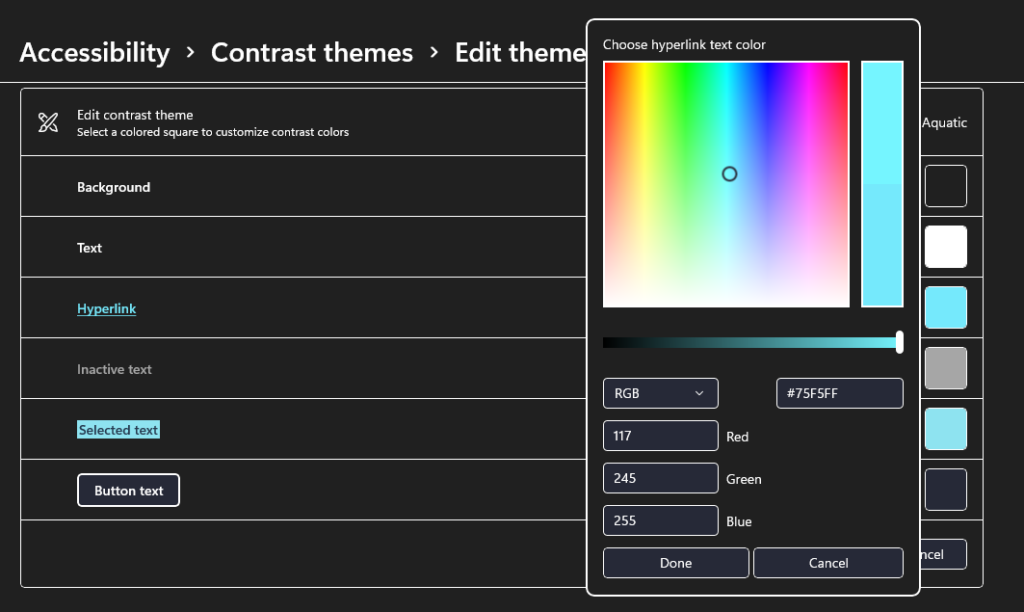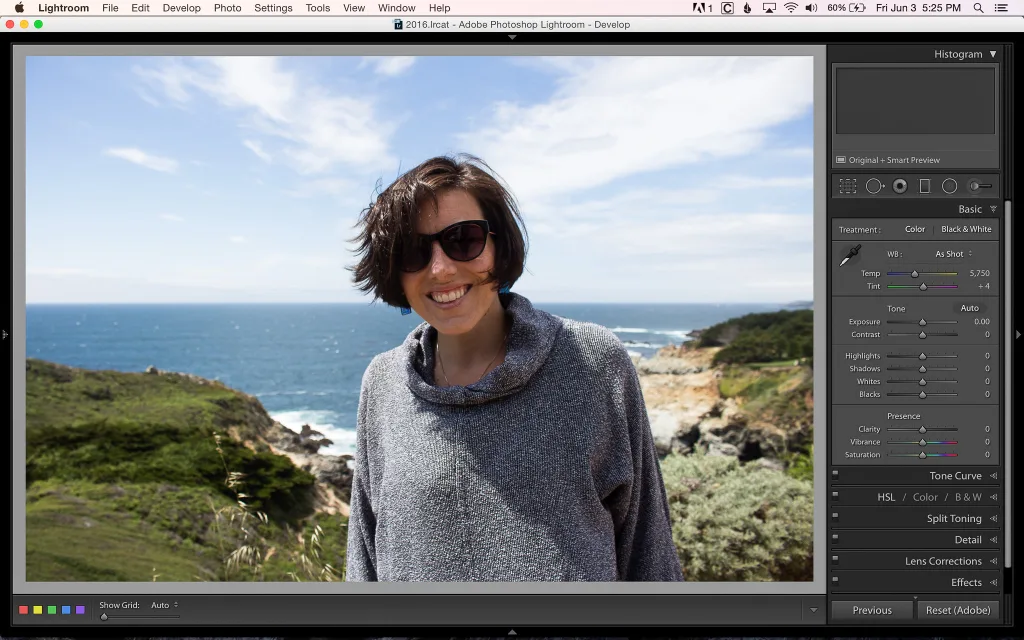Have you ever wondered what the difference is between brightness and contrast? If you’re looking to optimize the image quality of your screen, it’s important to understand how these two settings work together.
Brightness is the overall lightness or darkness of the image. It’s measured in terms of luminosity, which is how bright an object appears relative to its surroundings. By adjusting the Brightness slider, you can adjust the luminosity level across your entire image.
Contrast is a bit more complex. It measures the difference in brightness between objects or regions in an image. It’s expressed as a ratio between the maximum and minimum brightness levels (also known as a contrast ratio). For example, if your monitor has a contrast ratio of 1000:1, that means that the brightest white on your screen is 1000 times brighter than the darkest black. To adjust contrast, use the Contrast slide to make adjustments to the relative levels of dark and light areas in your image.
It’s important to note that both settings work togeher to create an optimal viewing experience. If you set Brightness too high, blacks will get lighter and your image will look washed out. If you set Contrast too high, details in bright images may become lost. It’s best practice to adjust Brightness first (to obtain a true black) before adjusting Contrast for desired brightness levels.
By understanding how Brightness and Contrast interact with each other, you can create an optimal viewing experience on any device with a screen!
Should Contrast Be Set Higher Than Brightness?
No, contrast should not necessarily be higher than brightness. Depending on the image you’re working with, you may want to adjust both of them individually to achieve the desired effect. Contrast is essentially a measure of how different the darkest and lightest parts of an image are, while brightness is the overall level of light in an image. Generally speaking, if you set contrast too high and brightness too low, your image will appear washed out and flat. On the othr hand, if you set brightness too high and contrast too low, small details in bright areas may be lost. Ultimately, it depends on what look and feel you’re going for; experiment with adjusting both settings until you find the right balance for your image.

Adjusting Brightness or Contrast: Which Should Come First?
When adjusting the brightness and contrast settings on a monitor or television receiver, it is important to adjust the brightness first. Brightness should be adjusted to obtain a true black, which will maximize the contrast of the image. Once you have achieved this true black level, then you can adjust the contrast for the appropriate brightness.
The Relationship Between Brightness and Contrast
Brightness and contrast can be related because they both affect the luminosity and tonal range of an image. Brightness is a measure of the overall lightness or darkness of an image, while contrast is the difference in brightness between objects or regions in an image. Adjusting the brightness will increase or decrease the average luminosity across the entire image, while adjusting contrast will make darker areas darker and lighter areas lighter. Both adjustments can be used to create more dynamic images, as well as making them appear more realistic or aesthetically pleasing.
The Ideal Ratio of Brightness and Contrast
The ideal ratio of brightness and contrast depends on the type of content you are viewing. Generally speaking, a good contrast ratio for most viewing environments is between 1000:1 and 3000:1. Higher ratios can be used in dark rooms where deep blacks are desired, while lower ratios may be more suitable for bright rooms where greater detail can be seen in brighter whites. It is important to note that a higher contrast ratio does not always result in a better image quality; if the image loos too bright or washed out, then lowering the contrast ratio may improve the overall picture quality.
Is 100 the Optimal Brightness and Contrast Setting?
No, brightness and contrast should not always be set to 100%. Setting the brightness and contrast too high can distort the picture and make it harder to see details in dark or light areas. To find the best setting for brightness and contrast, pause a movie on a scene with bright areas like clouds or snow, then turn the contrast to 100% and decrease it untl you start to see detail in the brightest areas. Depending on your TV model, there may be additional settings you can use to adjust other aspects of your picture such as color temperature or dynamic contrast. It’s important to take time to experiment with these settings in order to find the right balance for your viewing environment.

The Benefits of 100% Contrast
100% contrast can be good in some situations, but it can also do long-term damage to certain types of TVs. For CRT and plasma TV sets, leaving the contrast at 100% could cause permanent damage over time. It’s best to adjust the contrast to a lower level (80% or below) whenever possible. Additionally, if you’re having trouble seeing the picture clearly at 100%, you should adjust the contrast lower until you find a setting that provides the right balance between brightness and clarity.
The Benefits of High Contrast Settings for Eye Health
Yes, high contrast settings are good for eyes. High contrast settings help to reduce eye strain and fatigue, as they make it easier to distinguish between different objects. Additionally, the greater the contrast ratio between two colors, the less stress is placed on the eyes. For example, white on a black background has a higher contrast ratio than black on a white background. This makes it easier for our eyes to process what we are looking at and reduces strain on our eyes over time.
The Effects of High Contrast
High contrast typically refers to an image that has a wide range of tones from pure white to pure black. This means that it will have both bright and dark elements. The difference between high contrast and low contrast is that in high contrast, the range of tones from light to dark is more exaggerated and distinct.
The Impact of Contrast on Brightness
Contrast increases brightness by making the lighter parts of an image even lighter and the darker parts of an image even darker. This helps draw attention to the more subtle details and textures in an image, as well as making the overall image appear brighter and more dynamic. Contrast can be adjusted through a variety of methods, such as adjusting levels or curves or using a contrast filter. Increasing contrast can also help enhance certain colors in an image, creating a more vivid and vibrant look.

The Benefits of Adjusting Brightness and Contrast
Brightness and Contrast adjustments are used to adjust the tonal range of an image. By increasing the brightness, you can make an image appear brighter overall, while decreasing the brightness can make it darker. Contrast works by adjusting the bright and dark parts of an image in relation to each other, allowing you to create dynamic images with greater depth and dimension. By controlling these two parameters, you can emphasize features in your photo while still maintaining its natural character.
The Effects of Contrast
Contrast is a fundamental tool for creating images with greater visual impact. It helps to draw attention to important elements of an image and helps to create a sense of depth and dimension in the image. It does this by manipulating the brightness and darkness of different parts of the image relative to each other. A high contrast image has areas of very light and dark tones, while a low contrast image has more subtle variations in tone. Increasing contrast can also help to bring out details in an oherwise bland or busy scene. By increasing or decreasing contrast, photographers are able to emphasize certain aspects of a photo while de-emphasizing others, thus creating a more effective composition.
What is the Optimal Screen Brightness for Eye Comfort?
The best screen brightness for eyes is between 100-150 cd/m2. This level of brightness reduces the strain on your eyes and helps to prevent eye fatigue. This is especially true in an office environment, where normal brightness is around 300-500 lux. Setting your display brightness to 100-150 cd/m2 can help keep your eyes healthy and comfortable for extended periods of time.
What Constitutes a Good Contrast Level?
A good contrast level is one that provides clear and sharp images, with deep blacks and bright whites. The best contrast ratios are typically 3000:1 static contrast ratios. This means that the darkest black and brightest white can be 3000 times brighter or darker than the other. Higher contrast ratios will result in more vivid colors with greater detail, making images look more realistic and lifelike. For a good viewing experience, it is important to have a good contrast level that meets the minimum requirements for your display.
What Is the Best Screen Setting for Eye Comfort?
The best screen settings for your eyes depend on the time of day. During the daytime, it’s best to keep your monitor at a default color temperature of 6,500K to reduce eye strain. At night, a warmer color temperature of 3,400K is better for your eyes and helps you get a good night’s sleep. To make this adjustment easy, you can use an app like f.lux that automatically adjusts the screen settings according to the time of day.
Conclusion
In conclusion, brightness and contrast are both essential to creating a balanced and visually pleasing image. Brightness is the overall lightness or darkness of an image, while contrast is the difference in brightness between objects or regions. Adjusting brightness will determine the overall luminosity level of an image, while adjusting contrast will adjust the relative levels of dark and light areas. It’s important to keep a healthy balance between these two settings to create a vibrant and well-defined image with plenty of detail.
